This week, we are absolutely honored to bring you an exclusive interview with the esteemed Barbara Esch, BCBA-D, CCC-SLP. Dr. Esch has made incredible contributions to the fields of both Behavior Analysis and Speech Pathology. In this interview with Sam Blanco, Dr. Esch shares important teaching techniques on developing language, setting developmentally appropriate goals, and addressing feeding issues. An enormous thank you to Dr. Esch for her invaluable insight.
Don’t forget to check out the other interviews in our Autism Awareness Month Interview Series here.
Behavior Analysis and Speech Pathology: The Perfect Pairing for Speech Acquisition
with Barbara Esch, BCBA-D, CCC-SLP
SAM BLANCO: As someone who is both an SLP and BCBA, how do you envision the two fields collaborating?
BARBARA ESCH: Professionals in each field, behavior analysis and speech pathology, bring unique and critical information and skills to an instructional team. Behavior analysis offers a science-based technology based on our field’s theoretical perspective, which allows us to analyze the contexts in which learning occurs (i.e., antecedent and consequent events) as well as to identify faulty learning and to efficiently remediate error responses and to remove possible obstacles to further skill acquisition. Of particular importance in understanding and teaching language skills is Skinner’s analysis of verbal behavior (Skinner, 1957). This analysis provides us with the critically important understanding of how we acquire language skills; it dispels the faulty notion that the words we say, in a connected language context, are stored in our head someplace to be retrieved when we need them; rather, we say them as a function of the related environmental context, as mands, tacts, and as other verbal operants. This analysis is absent from traditional language assessments (for a discussion of this topic, see Esch, Lalonde, & Esch, 2009), so the field of behavior analysis fills this gap and provides not only a conceptual analysis but also a powerful teaching technology that allows us to extend language learning from one context (e.g., mand) to another (e.g., intraverbal).
Speech pathologists have specialized information and skills regarding the physical system that controls speech sound production, voice quality, swallowing, and, to some degree, hearing. The instructional team benefits from an SLP’s in-depth knowledge of how speech occurs, the physiology of the speech-production system, and how we move our vocalization musculature to produce various speech sounds. Speech pathologists know how to help speech learners make these movements more fluently. They understand the speech requirements for this fluency (i.e., co-articulation) and this expertise allows them to pinpoint specific speech targets in a logical hierarchy of speech sound acquisition.
SB: In the past, you have written that “Speech Language Pathologists are ideal professionals to be included on an ABA team.” Can you share why you think this is true? What steps can SLPs and ABA providers take to promote shared input on goal-setting and program-creation for clients?
BE: Yes, as you suggest, that comment was in the context of shared goals (“Speech language pathologists are ideal professionals to be included on an ABA team since its members are focused on providing effective and efficient instruction, much of which is geared toward speech and language acquisition.” (See https://www.asatonline.org/researfch-treatment/clinical-corner/integrating-aba-and-speech-pathology/)
An ABA team is an instructional team that uses applied behavior analysis to promote student learning. As such, effective team members are knowledgeable in the principles of learning and are skilled at applying the technological procedures that derive from those principles (for example, reinforcement, prompting, prompt fading, shaping, discrimination training, and so on).
There are several steps SLPs and ABA providers can take to promote shared input in designing and carrying out instructional programs for their clients. First, it’s important to recognize that all professionals on an “ABA team,” by definition, should be knowledgeable and skilled in delivering this technology during instruction. That is, members of the ABA team should consider themselves “ABA providers” if they are applying behavior analysis (i.e., ABA) to the delivery of instruction. Thus, teachers, SLPs, technicians, parents, other therapists, behavior analysts, and any others on the team can all be considered “ABA providers” to the extent that they are knowledgeable and effective “appliers” of the learning technology from the field of behavior analysis. Next, each professional can resist the urge to claim ownership over the program and its development. I think the best way to do this is to acknowledge areas of expertise that each member brings to the team and to work together to bring their varied expertise to bear on program development. As an ABA team, goal setting should occur within the context of a behavior analytic perspective. The process can be enriched through the collaborative input of all team members. So, another way team members can promote shared input is to support other team members in learning cross-disciplinary skills or at least in familiarizing themselves with the special expertise of each individual team member.
SB: Developing verbal skills for children with autism is an important goal for everyone involved with the student. Can you describe the first steps you use in selecting developmentally appropriate goals for a particular student?
BE: The VB-MAPP (Sundberg, 2008) is a strong resource in pinpointing developmentally appropriate goals for learners with skills at the pre-school level. This assessment identifies milestones and component skills in 16 critical verbal and non-verbal areas as well as providing an assessment of existing learning barriers that may preclude the acquisition of these important foundation skills. When I look at a child’s VB-MAPP, some priority areas that seem to be “king-pin skills” are imitation, mand, play/leisure, and listener responding. That is, these are some of the first skills I like to see in place as “supporting skills” for the others. If a child can imitate, then I know s/he values people and their attention (thus, we can teach social skills as well as address many of the learning barriers that may be present). Also, since echoing is a type of imitation, I’m encouraged if a child who isn’t yet speaking is beginning at least to imitate gross- and/or fine-motor models. If a child can imitate, then we can teach him/her to mand (either through speech, sign, or picture selection) and, thus, establish language as powerful and personally beneficial. If a child has play/leisure skills, then all the items connected with those play skills are potential reinforcers for other skill learning. This, in turn, can strengthen learning to persist at a task (i.e., stronger reinforcer value for instructional items/activities); this task persistence allows a child to effectively access other instruction from teachers. If a child can respond as a listener, then we can expand his/her cooperation and follow through with more complex instructions, eventually leading to responding both verbally and non-verbally after time delays (i.e., remembering). So, the “king-pin” skills, although not exclusively important, are strong supports for further learning.
SB: You developed the Early Echoic Skills Assessment for the Verbal Behavior Milestones Assessment and Placement Program (VB-MAPP). Can you describe the development of this tool and how practitioners should best utilize it?
BE: Dr. Mark Sundberg, author of the VB-MAPP (Sundberg, 2008), was interested in providing an assessment tool (and placement guide) that aligned with typical development of children from birth to 4 years. He wanted to include an echoic assessment that would reflect the details of this vocal skill for children in this age range and asked me if I would provide it. The Early Echoic Skills Assessment (EESA) is a criterion-referenced assessment of skills in echoing 1-, 2-, and 3-syllables in various vowel and consonant combinations, utilizing those consonants that would be expected developmentally from birth through 30 months. (Note: Echoic skills are only tested and reported on the VB-MAPP at Levels 1 and 2 because, by 30 months of age, these skills typically have been acquired; thus, there are no EESA items tested at VB-MAPP Level 3.)
The EESA can be helpful for clinicians and practitioners by pinpointing two critical skills: (1) echoic consistency and accuracy and (2) syllable fluency. For echoic consistency, we want to know if the child consistently says anything after an echoic model. If an echoic*, regardless of its accuracy, does not occur consistently (e.g., at least 90% of the time), then treatment can start with simply differentially reinforcing any vocal response that follows an auditory model, without regard for the accuracy of that response. In other words, the first skill to establish in speech training is to “say something” when the teacher asks you to. The next task, informed by the EESA, would be to determine the accuracy of the echoic response. That is, how closely does the child’s response match the vowels and consonants of the teacher’s model? An accurate description of any discrepancies here can serve as a template for target identification.
Finally, the EESA tells us if there is a fluency breakdown in terms of the child’s ability to repeat multiple syllables on one breath at a connected speech rate of about 3 syllables per second. This fluency is critical for normal-sounding speech, but we often see a teaching error related to this that makes fluency less likely to develop. Let’s say that you ask a child to repeat a 3-syllable utterance (e.g., computer, cookie please, let’s go play, where’s daddy?) and s/he omits one or more of the syllables. Often, when practitioners (teachers, parents, therapists) notice that a child omits some of the syllables in a phrase, they will break the phrase apart and reinforce the separate segments. For example, they might instruct the child: “say let’s” (good!), “say go” (that’s right!), “say play” (good job!). This is essentially training the child to emit 1-syllable utterances at a time and doesn’t increase the likelihood that the child will say “Let’s go play” as a unit nor that the phrase will ever occur as normal fluent speech. So, the EESA allows us to pinpoint the child’s current skill in terms of how many syllables s/he can say easily without omitting whole syllables, and it informs the next steps. Thus, treatment can focus on reinforcing, first, easy-to-produce consonant/vowel combinations in phrases of increasing syllable length and then, after that, increasing the phonemic complexity of these consonant/vowel combinations in even longer syllable-length vocalizations.
*An “incorrect echoic” is technically, according to a verbal behavior analysis, not an echoic at all. But this technicality will be set aside for this discussion, to make it easier to understand the 2 critical skills that are often missing in early speech learners: first, repeating a vocal model consistently, and then, repeating it accurately.
SB: Many parents and practitioners struggle with feeding issues in their learners with autism. Are there resources that you would recommend? Do you have tips/suggestions for them?
BE: You’ve identified one of the most challenging issues for parents and teachers of children with autism. Of course, it’s imperative first to rule out any medical concerns related to eating (accepting food, chewing it, swallowing it, and digesting it). So, the child’s pediatrician and other health-care professionals would be key initial contacts in moving forward to identify and resolve feeding issues. If no medical concerns are identified and behavioral treatment is not contraindicated, then it’s important to identify the behaviors related to feeding that have brought this concern to the forefront. Many children are picky eaters (e.g., no veggies; only sweet food) and some have unusual preferences (e.g., no food touching other food on the plate; no red food). Another common issue is texture preferences (e.g., nothing chunky that requires chewing). Some children accept so little food that their nutrition is compromised. Still others will accept food but keep it packed in their mouths and won’t swallow it. And, of course, many children engage in problem behavior that interferes with appropriate feeding (e.g., refusal to sit at the table, refusal to self-feed, refusal to open mouth, crying/tantrums during mealtime).
Fortunately, the behavior analytic literature is replete with research into on feeding issues. Much of this research comes from Dr. Cathleen Piazza, her colleagues, and her students over the years. Dr. Piazza is currently Director of the Pediatric Feeding Disorders Program at Munroe-Meyer Institute at the University of Nebraska Medical Center in Omaha, NE. Another well-published behavioral researcher in pediatric feeding disorders is Dr. Meeta Patel, a former colleague of Dr. Piazza and founder and executive director of Clinic 4 Kidz. The collective work of Drs. Piazza and Patel and others, much of which can be found in the Journal of Applied Behavior Analysis, has greatly informed the assessment and behavioral treatment of feeding disorders.
These are references for some of Dr. Piazza’s work (from her website):
Publications (within the last 5 years)
Rivas, K. M., Piazza, C. C., Roane, H. S., Volkert, V. M., Stewart, V., Kadey, H. J., & Groff, R. A. (in press). Analysis of self-feeding in children with feeding disorders. Journal of Applied Behavior Analysis, 47(4), 710-722.
Wilkins, J. W., Piazza, C. C., Groff, R. A., Volkert, V. M., Kozisek, J. M., & Milnes, S. M. (in press). Utensil manipulation during initial treatment of pediatric feeding problems. Journal of Applied Behavior Analysis, 47(4), 694-709.
Groff, R. A., Piazza, C. C., Volkert, V. M., & Jostad, C. M. (in press). Syringe fading as treatment for feeding refusal. Journal of Applied Behavior Analysis. 47(4), 834-839.
Volkert, V. M., Peterson, K. M., Zeleny, J. R., & Piazza, C. C. (2014). A clinical protocol to increase chewing and assess mastication in children with feeding disorders. Behavior Modification, 38(5), 705-29.
Bachmeyer, M. H., Gulotta, C. S., & Piazza, C. C. (2013). Liquid to baby food fading in the treatment of food refusal. Behavioral Interventions, 28(4), 281-298.
Kadey, H., Piazza, C. C., Rivas, K. M., & Zeleny, J. (2013). An evaluation of texture manipulations to increase swallowing. Journal of Applied Behavior Analysis, 46(2), 539-543.
Volkert, V. M., Piazza, C. C., Vaz, P. C. M., & Frese, J. (2013). A pilot study to increase chewing in children with feeding disorders. Behavior Modification, 37, 391-408.
Addison, L. R., Piazza, C. C., Patel, M. R., Bachmeyer, M. H., Rivas, K. M., Milnes, S. M., & Oddo, J. (2012). A comparison of sensory integrative and behavioral therapies as treatment for pediatric feeding disorders. Journal of Applied Behavior Analysis, 45, 455-471.
Vaz, P. C. M., Piazza, C. C., Stewart, V., Volkert, V. M., Groff, R. A., & Patel, M. R. (2012). Using a chaser to decrease packing in children with feeding disorders. Journal of Applied Behavior Analysis, 45, 97-105.
Dempsey, J., Piazza, C. C., Groff, R. A., & Kozisek, J. M. (2011). A flipped spoon and chin prompt to increase mouth clean. Journal of Applied Behavior Analysis, 44, 949-954.
LaRue, R. H., Stewart, V., Piazza, C. C., & Volkert, V. M. (2011). Escape as reinforcement and escape extinction in the treatment of feeding problems. Journal of Applied Behavior Analysis, 44, 719-735.
Groff, R. A., Piazza, C. C., Zeleny, J. R., & Dempsey, J. R. (2011). Spoon-to-cup fading as treatment for cup drinking in a child with intestinal failure. Journal of Applied Behavior Analysis, 44, 949-954.
Wilkins, J. W., Piazza, C. C., Groff, R. A., & Vaz, P. C. M. (2011). Chin prompt plus re-presentation as treatment for expulsion in children with feeding disorders. Journal of Applied Behavior Analysis, 44, 513-522.
Vaz, P. C. M., Volkert, V. M., & Piazza, C. C. (2011). Using negative reinforcement to increase self-feeding in a child with food selectivity. Journal of Applied Behavior Analysis, 44, 915-920.
Rivas, K. R., Piazza, C. C., Kadey, H. J., Volkert, V. M., & Stewart, V. (2011). Sequential treatment of a feeding problem using a pacifier and flipped spoon. Journal of Applied Behavior Analysis, 44, 387-391.
Volkert, V. M., Vaz, P. C. M., Piazza, C. C., Frese, J., & Barnett, L. (2011). Using a flipped spoon to decrease packing in children with feeding disorders. Journal of Applied Behavior Analysis, 44, 617-621.
Tang, B., Piazza, C. C., Dolezal, D., & Stein, M. T. (2011). Severe feeding disorder and malnutrition in two children with autism. Journal of Developmental and Behavioral Pediatrics. 32(3), 264-267.
Rivas, K. D., Piazza, C. C., Patel, M. R., & Bachmeyer, M. H. (2010). Spoon distance fading with and without escape extinction as treatment for food refusal. Journal of Applied Behavior Analysis, 43, 673-683.
SB: You’ve published research about behavioral treatments for early speech acquisition. Can you briefly describe your research? What do you think are important research questions in this area for the future?
BE: There are few behavioral treatments for early speech learners (i.e., individuals who haven’t acquired speech as would be developmentally typical). Further, the research on these treatments is not particularly robust at this point; either there is a paucity of studies available or the outcomes are inconsistent. It’s an area ripe for research because we need effective and efficient ways to jump start vocal behavior in individuals who haven’t yet acquired an echoic response. It’s not too difficult to teach someone to talk if they will repeat when asked to “say ___,” but without that echoic response, we must work to establish vocalizing in general as a “preferred activity,” producing a “preferred stimulus” that automatically reinforces the vocalizing that produced those sounds (i.e., babbling, vocal play). If we have that, then we can bring those vocalizations under the control of direct contingencies of reinforcement, as functional verbal behavior (e.g., mands, tacts). This post-babbling speech training is critical, because parents, teachers, and other caregivers in the child’s verbal community need to have their own vocal-verbal behavior reinforced by the child’s speech responses to them. Without that reciprocal interaction of vocalizing in context (i.e., speaker/listener), the frequency of functional speech interactions can spiral downward with resulting isolation for both speakers and listeners.
So, the first step in teaching speech to non-vocal learners is to establish an available pool of varied vocalizations that the child readily says that can then be reinforced by the child’s verbal community. Following the earlier work of behavioral researchers (e.g., Miguel, Carr, Michael, 2002; Sundberg, Michael, Partington, & Sundberg, 1996; Yoon & Bennett, 2000; Yoon & Feliciano, 2007), my colleagues and I have reported investigations (Esch, Carr, & Michael, 2005; Esch, Carr, & Grow, 2009; Petursdottir, Carp, Matthies, & Esch, 2011) of stimulus-stimulus pairing (SSP), a conditioning treatment aimed at increasing vocalizations in non-vocal or low-vocal learners by pairing certain sounds with preferred items/activities. As mentioned, if SSP induces vocalizations, the goal is then to apply direct reinforcement to establish these vocal responses as mands, tacts, echoics, and other verbal language skills. Another behavioral treatment is vocal variability (VV) training, aimed at increasing novel and varied vocalizations in speech learners who may emit some vocalizations but that tend to be repetitive (i.e., invariant). However, to date, there are only 2 published VV studies with low-vocal speech learners (Esch, Esch, & Love, 2009; Koehler-Platten, Grow, Schulze, & Bertone, 2013), although we have some research that has investigated increasing the variability of rote language responses with already-competent speakers (Lee et al., 2002; Susa & Schlinger, 2012).
In an effort to increase speech in non-vocal children, other studies have looked at comparisons of SSP with operant discrimination training (Lepper, Petursdottir, & Esch, 2013) and preceding echoic trials with a series of gross- and fine-motor imitation opportunities (i.e., RMIA procedures reported by Ross & Greer, 2003; Tsiouri & Greer, 2007). Investigations such as these may yield useful treatments for early speech learners.
There is much we don’t know about why children fail to learn to talk. We assume that success in speech learning is based on (a) hearing and attending to human voice, (b) valuing those sounds and combinations of sounds via a previous conditioning history, and (c) possessing a physical system that produces sounds similar to those with the conditioning history (i.e., the sounds of the child’s verbal community). If we assume that the child’s speech-producing mechanism (c above) is intact, then we can focus our research efforts on (a) and (b). In fact, SSP and VV training are targeted at increasing “sound value” and RMIA studies are aimed at increasing attending and responding to (i.e., imitating) rapid visual and auditory models. In a discussion related to these skill sets, Petursdottir et al. (2011) offer several important areas for future research. One is that of determining whether human speech (the auditory stimuli in speech training) is, indeed, a preferred stimulus for the learner (that is, does it “sound good” to the child?). Another is to identify the effects of such stimuli on the vocal responses of the speech learner. If the speech sounds of a child’s environment lacks reinforcing value, then what do we need to pair it with and in what conditioning procedure to ensure that it becomes a “preferred stimulus” that the early speech learner can produce himself by making those sounds? Another topic is the salience of auditory vocal stimuli; this has not been adequately measured and identified. It would be helpful to know whether a speech learner has, indeed, observed relevant speech sounds such that these are discriminable and evoke responding.
Additional Reading
Esch, B. E., LaLonde, K. B., & Esch, J. W. (2010). Speech and language assessment: A verbal behavior analysis. The Journal of Speech-Language Pathology and Applied Behavior Analysis, 5, 166-191.
Skinner, B. F. (1957). Verbal behavior. New York: Appleton-Century-Crofts.
Sundberg, M. L. (2008). VB-MAPP: Verbal behavior milestones assessment and placement program. Concord, CA: AVB Press.
ABOUT BARBARA ESCH, BCBA-D, CCC-SLP
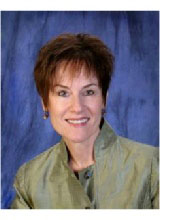 Dr. Barbara Esch, BCBA-D, CCC-SLP, is a behavior analyst and speech pathologist with more than 30 years of experience in behavioral interventions for individuals with developmental disabilities. She has worked in school, home, clinic, and hospital settings. Her workshops, training symposia, and research have been presented in the United States, Europe, and Australia, and focus on the use of behavioral procedures to improve speech, language, and feeding skills for individuals of all ages with a wide range of medical and educational diagnoses. Esch received her PhD in applied behavior analysis from Western Michigan University and her MA in speech pathology from Michigan State University. She is the author of the Early Echoic Skills Assessment, part of the Verbal Behavior Milestones Assessment and Placement Program: VB-MAPP (Sundberg, 2008). She is the founder and past chairperson of the Speech Pathology Special Interest Group of the Association for Behavior Analysis International. Her research on behavioral treatments for early speech acquisition appears in The Analysis of Verbal Behavior and the Journal of Applied Behavior Analysis. Esch is co-owner of Esch Behavior Consultants, Inc., a consulting company specializing in behavioral treatments for individuals with severe communication delays.
Dr. Barbara Esch, BCBA-D, CCC-SLP, is a behavior analyst and speech pathologist with more than 30 years of experience in behavioral interventions for individuals with developmental disabilities. She has worked in school, home, clinic, and hospital settings. Her workshops, training symposia, and research have been presented in the United States, Europe, and Australia, and focus on the use of behavioral procedures to improve speech, language, and feeding skills for individuals of all ages with a wide range of medical and educational diagnoses. Esch received her PhD in applied behavior analysis from Western Michigan University and her MA in speech pathology from Michigan State University. She is the author of the Early Echoic Skills Assessment, part of the Verbal Behavior Milestones Assessment and Placement Program: VB-MAPP (Sundberg, 2008). She is the founder and past chairperson of the Speech Pathology Special Interest Group of the Association for Behavior Analysis International. Her research on behavioral treatments for early speech acquisition appears in The Analysis of Verbal Behavior and the Journal of Applied Behavior Analysis. Esch is co-owner of Esch Behavior Consultants, Inc., a consulting company specializing in behavioral treatments for individuals with severe communication delays.







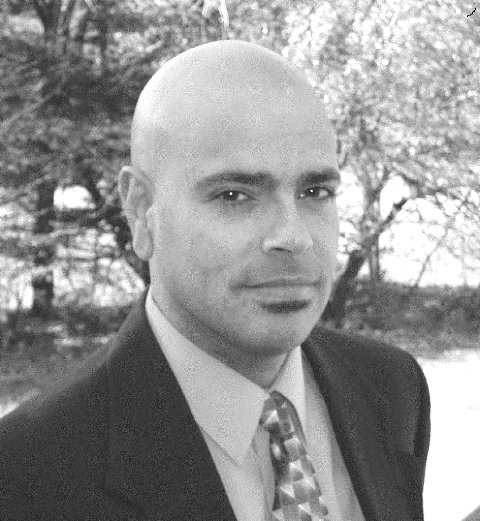 Dr. David Celiberti is the Executive Director of the Association for Science in Autism Treatment (ASAT). He previously served as the President of the Board of Directors of ASAT from 2006 through 2012. In response to the increasing number of parents attending professional conferences to learn about applied behavior analysis, he also founded the Parent-Professional Partnership SIG for the Association for Behavior Analysis International in 2000 and served as its Co-President until 2014. He had also served as President of the Autism Special Interest Group (SIG) from 1998 to 2006. He currently sits on a number of Advisory Boards in the area of autism, as well as in early childhood education. He has organized fundraising initiatives to support afterschool programming for economically disadvantaged children in Northern New Jersey. Dr. Celiberti is in private practice and provides consultation to public and private schools and agencies in the U.S. and Canada. He received his Ph.D. in clinical psychology from Rutgers University in 1993. He has authored several articles in professional journals and presents frequently at regional, national, and international conferences. He has taught courses related to ABA at both the undergraduate and graduate levels, supervised individuals pursuing their BCBA and BCaBA, and in prior positions had conducted research in the areas of applied behavior analysis, family intervention, and autism.
Dr. David Celiberti is the Executive Director of the Association for Science in Autism Treatment (ASAT). He previously served as the President of the Board of Directors of ASAT from 2006 through 2012. In response to the increasing number of parents attending professional conferences to learn about applied behavior analysis, he also founded the Parent-Professional Partnership SIG for the Association for Behavior Analysis International in 2000 and served as its Co-President until 2014. He had also served as President of the Autism Special Interest Group (SIG) from 1998 to 2006. He currently sits on a number of Advisory Boards in the area of autism, as well as in early childhood education. He has organized fundraising initiatives to support afterschool programming for economically disadvantaged children in Northern New Jersey. Dr. Celiberti is in private practice and provides consultation to public and private schools and agencies in the U.S. and Canada. He received his Ph.D. in clinical psychology from Rutgers University in 1993. He has authored several articles in professional journals and presents frequently at regional, national, and international conferences. He has taught courses related to ABA at both the undergraduate and graduate levels, supervised individuals pursuing their BCBA and BCaBA, and in prior positions had conducted research in the areas of applied behavior analysis, family intervention, and autism.




 Dr. Barbara Esch, BCBA-D, CCC-SLP, is a behavior analyst and speech pathologist with more than 30 years of experience in behavioral interventions for individuals with developmental disabilities. She has worked in school, home, clinic, and hospital settings. Her workshops, training symposia, and research have been presented in the United States, Europe, and Australia, and focus on the use of behavioral procedures to improve speech, language, and feeding skills for individuals of all ages with a wide range of medical and educational diagnoses. Esch received her PhD in applied behavior analysis from Western Michigan University and her MA in speech pathology from Michigan State University. She is the author of the Early Echoic Skills Assessment, part of the Verbal Behavior Milestones Assessment and Placement Program: VB-MAPP (Sundberg, 2008). She is the founder and past chairperson of the Speech Pathology Special Interest Group of the Association for Behavior Analysis International. Her research on behavioral treatments for early speech acquisition appears in The Analysis of Verbal Behavior and the Journal of Applied Behavior Analysis. Esch is co-owner of Esch Behavior Consultants, Inc., a consulting company specializing in behavioral treatments for individuals with severe communication delays.
Dr. Barbara Esch, BCBA-D, CCC-SLP, is a behavior analyst and speech pathologist with more than 30 years of experience in behavioral interventions for individuals with developmental disabilities. She has worked in school, home, clinic, and hospital settings. Her workshops, training symposia, and research have been presented in the United States, Europe, and Australia, and focus on the use of behavioral procedures to improve speech, language, and feeding skills for individuals of all ages with a wide range of medical and educational diagnoses. Esch received her PhD in applied behavior analysis from Western Michigan University and her MA in speech pathology from Michigan State University. She is the author of the Early Echoic Skills Assessment, part of the Verbal Behavior Milestones Assessment and Placement Program: VB-MAPP (Sundberg, 2008). She is the founder and past chairperson of the Speech Pathology Special Interest Group of the Association for Behavior Analysis International. Her research on behavioral treatments for early speech acquisition appears in The Analysis of Verbal Behavior and the Journal of Applied Behavior Analysis. Esch is co-owner of Esch Behavior Consultants, Inc., a consulting company specializing in behavioral treatments for individuals with severe communication delays. The Museum of Natural History’s ‘Discovery Squad’ meets on select Saturdays for children ages 5- 14, accompanied by an adult, before the museum is open to the general public. Specially trained museum guides will lead a 40 minute tour through the North American Hall of Mammals (ages 5-8) or on an adventure through the Koch Dinosaur Wing.
The Museum of Natural History’s ‘Discovery Squad’ meets on select Saturdays for children ages 5- 14, accompanied by an adult, before the museum is open to the general public. Specially trained museum guides will lead a 40 minute tour through the North American Hall of Mammals (ages 5-8) or on an adventure through the Koch Dinosaur Wing.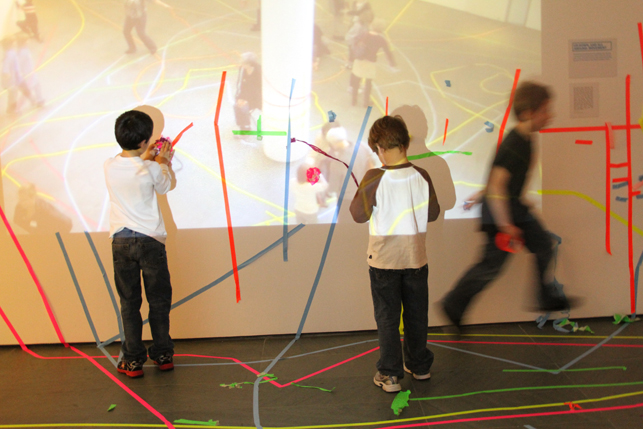 Each month the Museum of Modern Art’s program ‘Create Ability’ follows a different theme through the galleries to explore the art work and workshops to create in the classroom. These workshops are intended for individuals with developmental or learning disabilities ages 5-18+ and are free with pre-registration!
Each month the Museum of Modern Art’s program ‘Create Ability’ follows a different theme through the galleries to explore the art work and workshops to create in the classroom. These workshops are intended for individuals with developmental or learning disabilities ages 5-18+ and are free with pre-registration! NBC’s Dateline recently aired “On the Brink,” a 3-year chronicle of two New York-based young adults with autism and the emotional journeys their families have endured. As they transition from graduation to adulthood, they make a leap towards the unexpected future.
NBC’s Dateline recently aired “On the Brink,” a 3-year chronicle of two New York-based young adults with autism and the emotional journeys their families have endured. As they transition from graduation to adulthood, they make a leap towards the unexpected future.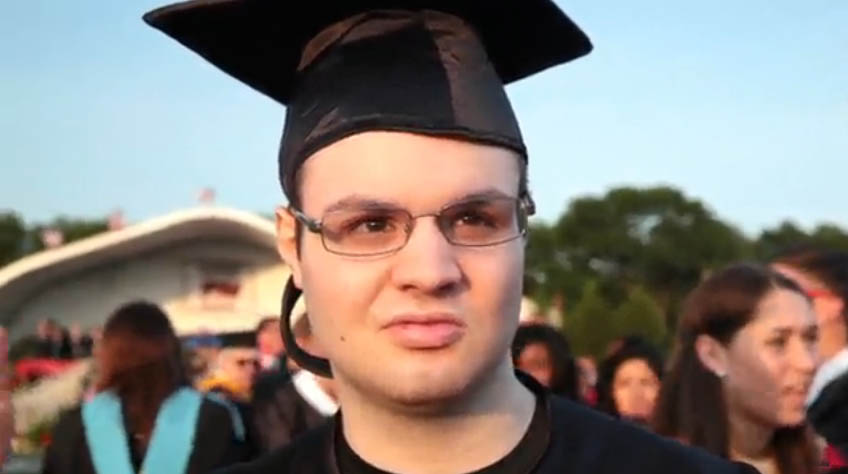 This report puts a spotlight on autism’s “aging out” crisis. “On the Brink” presents a deeper look at the lives of young adults with autism and the measures parents must take to provide their children with specialized services and a better future when they turn 21. Both families featured in this episode fight to help their children and revolutionize the way autism is perceived in the U.S.
This report puts a spotlight on autism’s “aging out” crisis. “On the Brink” presents a deeper look at the lives of young adults with autism and the measures parents must take to provide their children with specialized services and a better future when they turn 21. Both families featured in this episode fight to help their children and revolutionize the way autism is perceived in the U.S.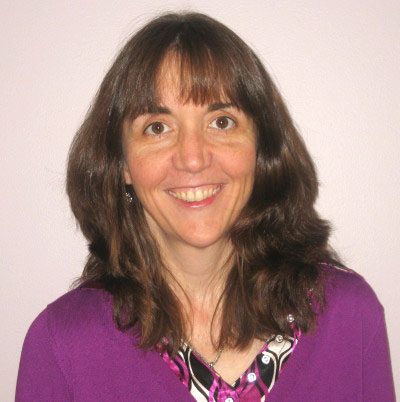 Mary Jane Weiss, Ph.D., BCBA-D has been working as a behavior analyst serving people with autism for over 25 years. She received her Ph.D. in Clinical Psychology from Rutgers University in 1990, and became a Board Certified Behavior Analyst in 2000. She is currently a Professor of Education at Endicott College, where she directs the graduate programs in ABA and Autism. She previously served as an Associate Professor at the Graduate School of Applied and Professional Psychology at Rutgers University, and as Director of Research and Training and as Clinical Director of the Douglass Developmental Disabilities Center at Rutgers University for 16 years. Her clinical and research interests center on defining best practice ABA techniques, on evaluating the impact of ABA in learners with autism spectrum disorders, and in maximizing family members’ expertise and adaptation. She is a regular presenter at regional and national conferences on topics relevant to ABA and autism. She is a past president of the Autism Special Interest Group of the Association for Behavior Analysis, a former member of the Association of Professional Behavior Analysts Board of Directors, and she currently serves on the ethics review committee of the Behavior Analyst Certification Board, on the Scientific Council of the Organization for Autism Research, on the Legislative Affairs Committee of the New Jersey Association for Behavior Analysis, and on the Board of Trustees of Autism NJ.
Mary Jane Weiss, Ph.D., BCBA-D has been working as a behavior analyst serving people with autism for over 25 years. She received her Ph.D. in Clinical Psychology from Rutgers University in 1990, and became a Board Certified Behavior Analyst in 2000. She is currently a Professor of Education at Endicott College, where she directs the graduate programs in ABA and Autism. She previously served as an Associate Professor at the Graduate School of Applied and Professional Psychology at Rutgers University, and as Director of Research and Training and as Clinical Director of the Douglass Developmental Disabilities Center at Rutgers University for 16 years. Her clinical and research interests center on defining best practice ABA techniques, on evaluating the impact of ABA in learners with autism spectrum disorders, and in maximizing family members’ expertise and adaptation. She is a regular presenter at regional and national conferences on topics relevant to ABA and autism. She is a past president of the Autism Special Interest Group of the Association for Behavior Analysis, a former member of the Association of Professional Behavior Analysts Board of Directors, and she currently serves on the ethics review committee of the Behavior Analyst Certification Board, on the Scientific Council of the Organization for Autism Research, on the Legislative Affairs Committee of the New Jersey Association for Behavior Analysis, and on the Board of Trustees of Autism NJ.